Canadian National Cuisine

10 dishes you must try.
If you think that Canada's national cuisine consists of maple syrup in different variations, you are sorely mistaken. Canada's culinary history is inextricably linked to Europe, and cooking is still dominated primarily by European traditions.
Traditional cuisine in the English-speaking part of Canada was influenced by Britain, Quebec is expected to honor the French heritage, recipes in the southwestern regions of Ontario show Scandinavian motifs, the provinces of the Canadian Prairies retain the traditions of Eastern European cuisine. An influx of immigrants from China has popularized Asian and Indian cuisine. The trend for Canada is relatively new, no more than 50 years old, but Canadians have happily embraced the new flavours and incorporated them into their habits.
We bring you the top ten amazing national cuisines that you must try in Canada!
Poutine

The delicious dish of French fries, cottage cheese and gravy is Canada's most famous and most distinctive fast food.
This bright representative of French influence appeared in Quebec in the late 1950s in the Centre-du-Quebec region. Canadians did not immediately accept the culinary invention: for years it was not only ridiculed, but also used to mock Quebec society. Later, poutine became a symbol of Quebec culture, and now there are annual festivals devoted to this dish all over Canada.
It is not without scandals: in March, some restaurants started receiving threats in connection with the name of the dish, which resembles the name of the President of Russia. Attempts to explain to the blackmailers that the French word poutine is pronounced quite differently and has nothing to do with the Russian leader were unsuccessful, and Le Roy Jucep restaurant in Quebec even decided to temporarily rename poutine to fried potatoes with cheese. This was a fatal mistake. After the news was published, the reaction of Canadians was violent: the restaurant reported receiving death threats.
2. Tourtière du Lac-Saint-Jean
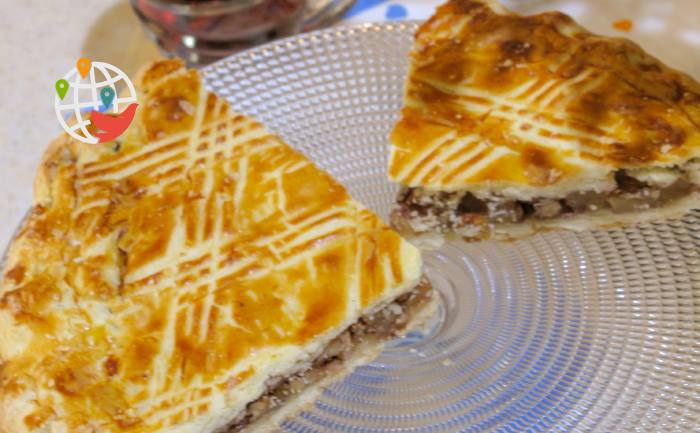

This weekend Canada switches to winter time

A new era for Canadian athletes

Canada celebrates its National Day and reflec...

Rising inflation in May threatens rate cuts i...

Canada Prepares for a Sharp Increase in the E...

High Auto Insurance Rates for Immigrants Spar...

Canadian intelligence raises alarm: China's i...

Canada continues to attract skilled professio...

How the food supply chain in Canada works and...

The mysterious disappearance of a taxidermy g...

The remains of a mysterious ship have been fo...

Saskatchewan raises age limit for tobacco pur...
A Quebec folk dish traditionally served on Christmas Eve: a meat pie filled with minced meat, cubed potatoes, and broth. The name "turtier" comes from the name of the wide and deep dish in which it is cooked.
Mention of this pie is found in records from the 13th century. Nowadays, in Quebec, the recipe varies from one area to another; more often than not, chefs prefer not to add potatoes, but to stuff the dough densely with meat with fragrant peppers and cloves.
3. Montreal smoked meat
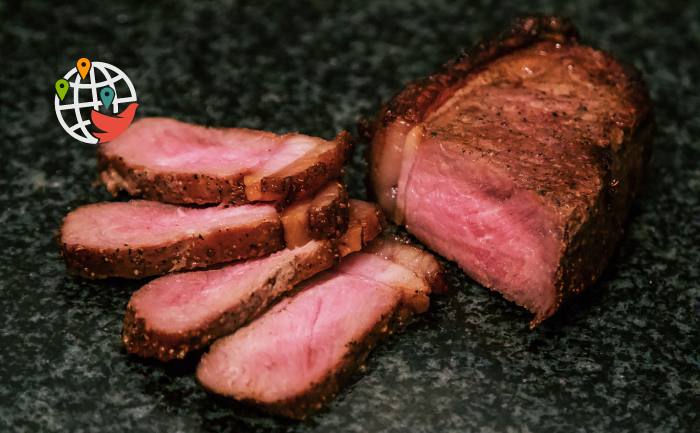
This dish can be called a kind of fast food: slices of beef, seasoned with spices, marinated for 10-14 days, and then smoked, are served in a sandwich of rye bread smeared with yellow or spiced mustard. The sandwich is often accompanied by French fries, coleslaw, and pickle.
The recipe was brought to British Columbia in the late 19th and early 20th centuries by Jewish immigrants from Eastern Europe. The appearance of a precursor to Montreal-style smoked meat is usually attributed to Aaron Sanft, a Jewish immigrant from Romania. Aaron Sanft arrived in Montreal in 1884 and became the first butcher in the city to sell kosher meat.
Nowadays, the delicacy can increasingly be tasted not in the form of sandwiches: it is served with pizza and poutine, and in grocery stores you can find packages of steamed meat.
4. Newfoundland pea soup
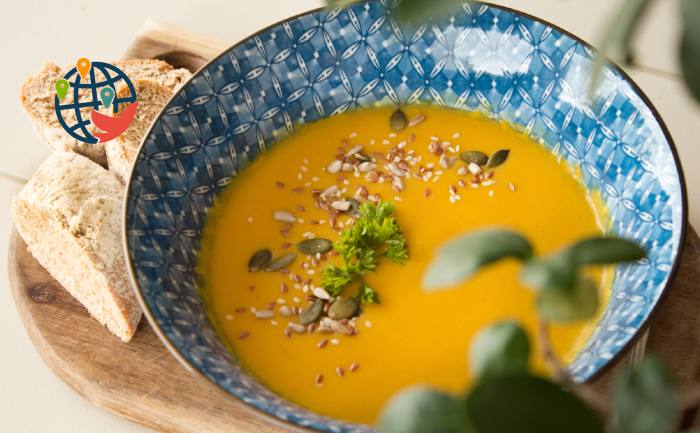
A calorie-warming soup made from yellow chopped peas, it's a real treasure in cold weather. According to some accounts, it was originally introduced to Quebec by French settlers in the 17th century; others say it was invented by French-Canadian workers in the early 1800s. Either way, most dishes from that period were created to fill a hungry stomach quickly and permanently.
In Newfoundland and Labrador they prefer to make pea soup after Easter Sunday, when ham is served for dinner. They use the leftover meat to chop and flavor their soups. Many also serve yellow pea soup with large dumplings, which they call doughboys.
Canadians believe that the key to success in cooking the dish is the right meat, spices such as thyme, and a great deal of patience: the process of softening peas takes several hours. But the wait is worth it, and for those not ready to spend that much time in the kitchen, most grocery stores in Canada offer ready-made options in jars.
5. Montreal-style bagel

Montreal bagels are a popular Canadian street food. They are cooked in a wood-fired oven and malt is put into the dough. They are dipped in hot water and honey before baking, so they become sweet. The two most common varieties are sesame and poppy seed.
The recipe was brought to North America by immigrants from Eastern Europe, and in some Montreal establishments bagels are still made by hand in front of customers.
Montreal bagels have been in space in 2008: astronaut Greg Chamitoff took a whole bag of pastries with him and treated all his colleagues in zero gravity.
6. Saskatoon Berry Pie

Let's move on to sweets!
Saskatoon berries, known to us as alderwort, resemble blueberries in appearance. They are grown throughout Canada, especially in the Prairies and British Columbia. The berries are now under serious threat in Western Canada because of habitat loss caused by housing and industrial development. Along with the plants are lost the historical knowledge and berry-picking practices that have been carried out for generations by Indigenous people.
Legends of the Klamath Indians tell us that the first people were created from Saskatoon bushes. Later, the town of Saskatoon itself was named after these berries, not the other way around! Berries were a staple food for natives and early settlers alike. They were eaten fresh or steamed, puréed, and then dried for the winter in bars. In winter, these bars were added to soups, stews, mixed with fat, or simply boiled to make a vitamin drink.
These days, cooks are unanimous: the sweet, nutty flavor of berries comes out best when baked under a crispy sugar crust. Saskatoon berry pie is served all over Canada.
7. Nanaimo bar
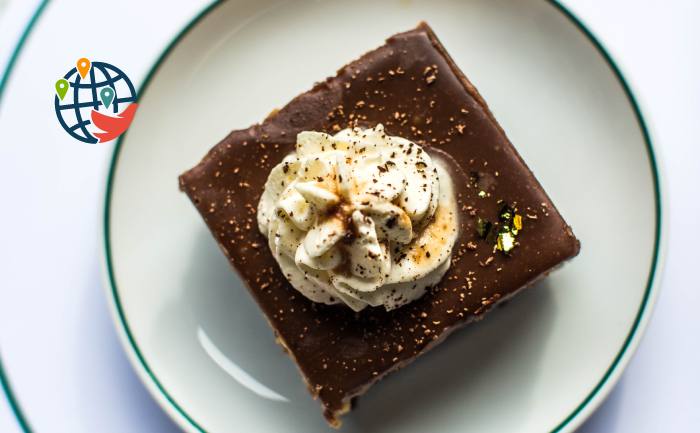
One of Canadians' favorite desserts requires no baking and consists of 3 layers: a base of honey crackers with coconut shavings, custard cream and chocolate ganache.
The pastry was named after the town of Nanaimo in British Columbia. It is said that the dessert was invented by an ordinary housewife because she really wanted to get into the cookbook. Nanaimo became popular in the 1950s, but finally won the hearts of Canadians 30 years after it was named the classic Canadian dessert at Expo-86. Canada has an entire museum dedicated to Nanaimo, where the original recipe is also kept.
Modern cafes offer dozens of versions of the dessert: with mint or berry filling, with waffles, peanut butter, coffee cream, cherries, and even bacon. But we recommend that you start with the traditional version.
8. Nova Scotia Wild Blueberry Grunt
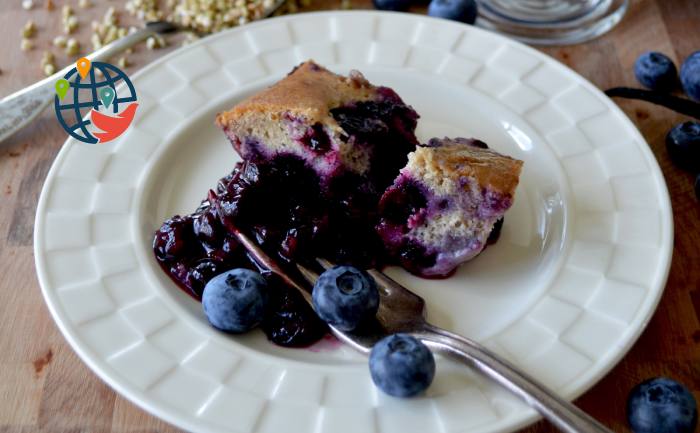
The funny name of the stunning wild blueberry dessert has an explanation: it originated from the sound the berries make when boiled.
The recipe is thought to have been brought to Nova Scotia by the British. Finding that the seaside lands were rich in wild berries, they adapted their traditional pudding and transformed it into what we call blueberry gratin.
The most important thing about this dessert is that the berries and lemon juice are properly boiled and the dough is cooked in this blueberry sauce. No oven needed!
In Canada, you can try variations of the recipe with rhubarb, apples and Saskatoon berries, but mostly the grant is just served with a scoop of creamy ice cream, which is the Canadians' favourite option.
9. Butter tart

A unique Canadian dessert that is said to literally establish a Canadian identity.
The first published recipe dates from 1900, found in the Cookbook for Women of the Royal Victoria Hospital. However, it is believed that the cream pie itself was invented much earlier, at a time when from 1663 to 1673, 800 young women were sent to Quebec from France to help with colonization. They brought their traditional recipes and adapted them to the products that were available.
The composition of the pie is simple: tart-shaped puff pastry, sugar, eggs, corn syrup, and butter. Modern cooks often add nuts and raisins, and especially often replace the corn syrup with maple syrup.
10. Bloody Ceasar
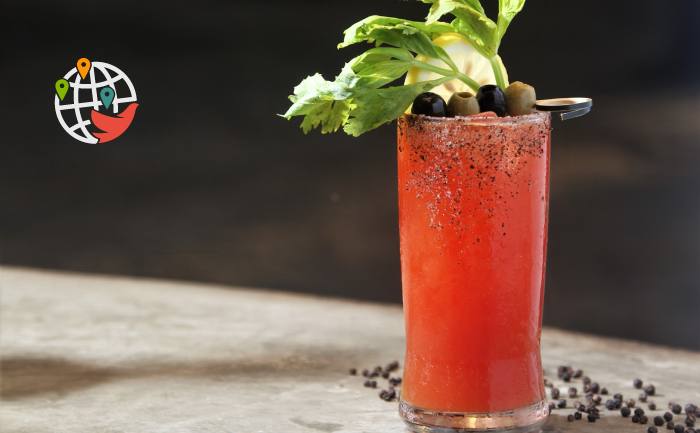
We couldn't resist mentioning it one last time! Canada's national cocktail is rich in ingredients: vodka, clam juice, tomato juice, spices and Worcestershire sauce. It is usually served in a glass with a rim of salt, celery, lime and olive.
The Italian influence was not absent here: in 1969, the management of a hotel in Calgary, Alberta asked Walter Chell to make a cocktail to celebrate the opening of the Italian restaurant Marco's. Inspired by clam pasta, Chell invented the inimitable drink, which has become one of the highlights of Canadian cuisine and, in 2006, was ranked #13 on the CBC's "Greatest Canadian Invention" list.
Since 2009, Calgary has celebrated Caesar's Day, and more than 400 million glasses of this cocktail are drunk across Canada each year.
The variety of recipes of Canada's national cuisine, of course, is not limited to these ten, in fact, the composition of the same dishes, spices and presentation varies from region to region.

















